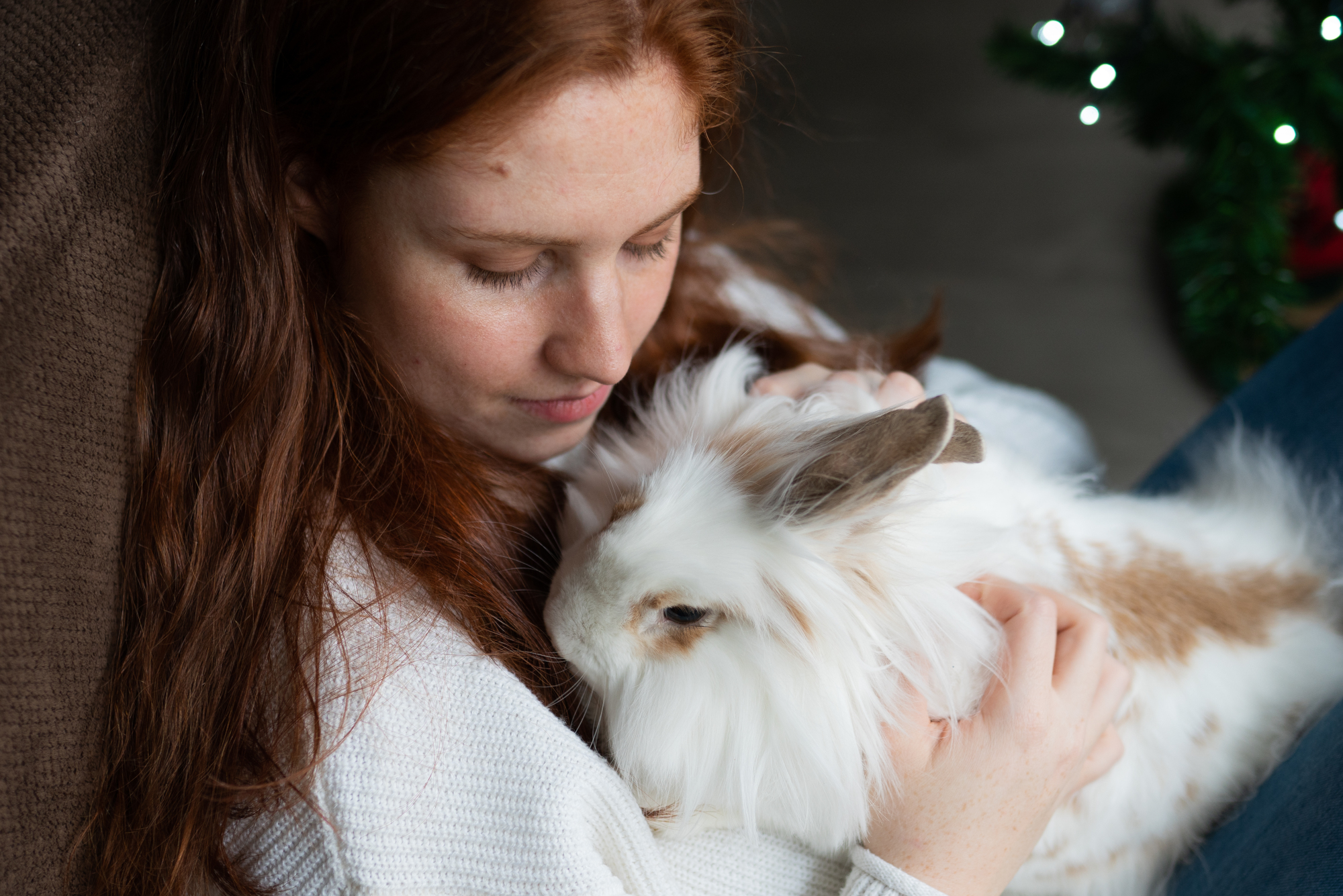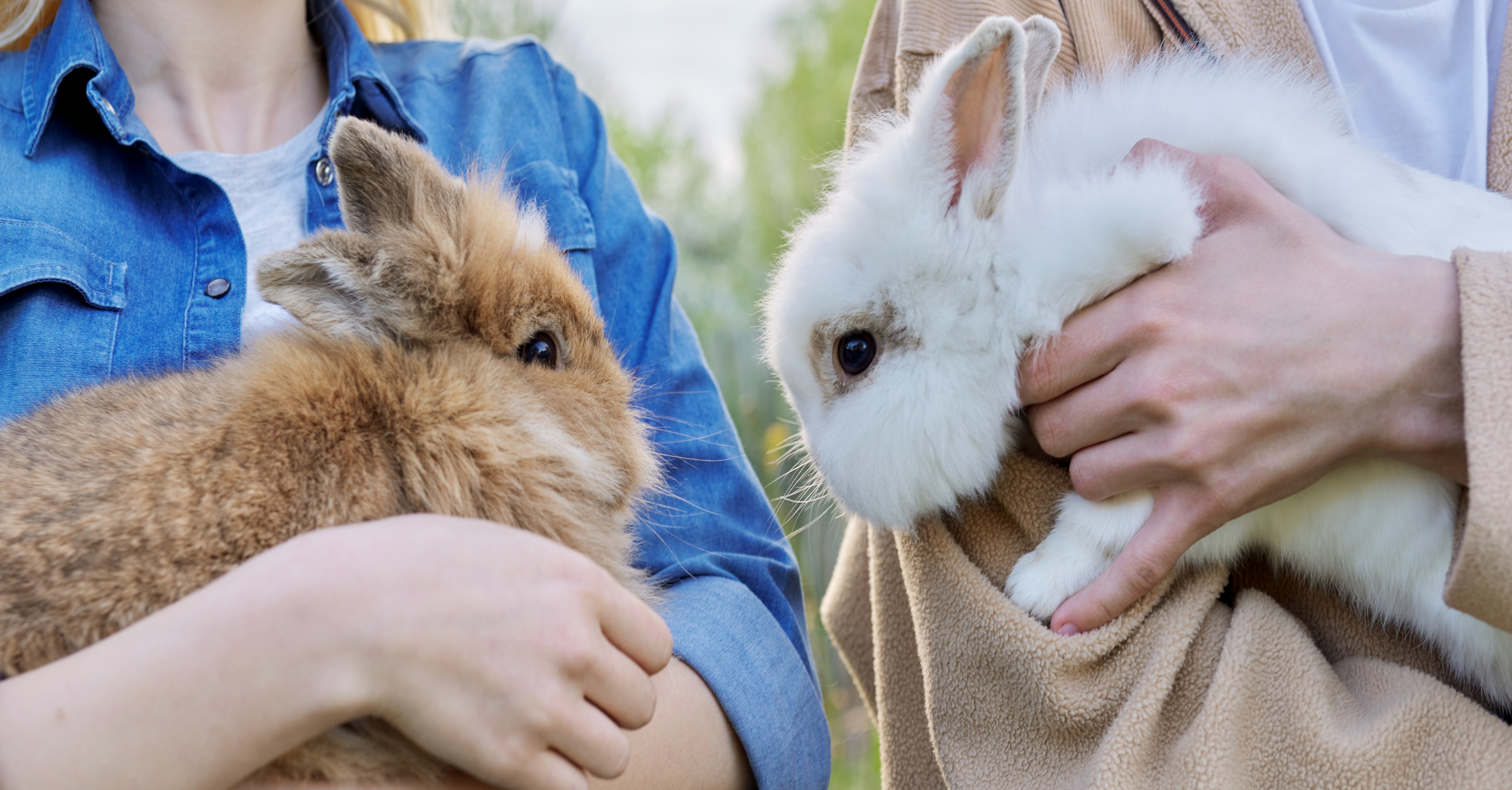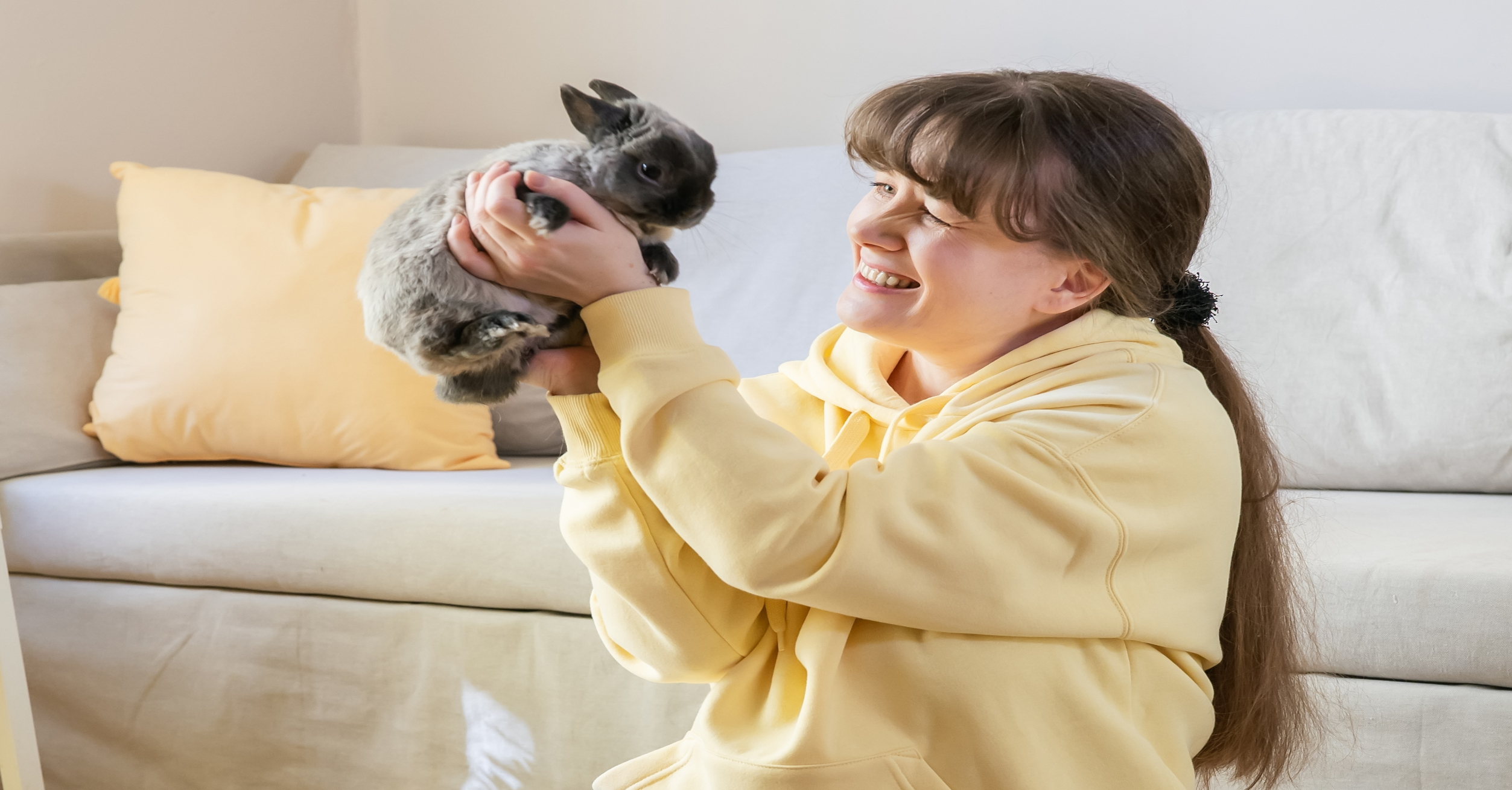For many people, long-haired rabbits are beloved pets, companions, and members of the family. Whether you have an Angora rabbit or a Lionhead, understanding the unique needs of long-haired breeds is an essential part of caring for them properly.
With the long, beautiful hair of these breeds, it’s particularly important to learn the best practices for grooming. That’s why in this guide, we’ll explain everything you need to know about grooming your long-hair rabbit the efficient, easy, and safe way.
Long-Hair Rabbit Breeds
As pet rabbits go, there are a handful of long-haired breeds that are most common. These breeds are:
- Lionheads
- English Angoras
- French Angoras
- Giant Angoras
- Satin Angoras
- American Fuzzy Lops
- Jersey Wooleys
There are other types of rabbits that may fall into the long-hair category. If you’re ever unsure what kind of grooming your specific rabbit needs, a veterinarian would be happy to offer some pointers.
Why Do Long-Hair Rabbits Need Special Grooming?
Proper, consistent grooming is essential for all rabbits, particularly those with longer hair. Not only does good grooming help keep their coat clean and looking its best, but also it protects them from several health concerns in the future.
Poorly groomed rabbits will naturally end up ingesting more hair when they clean themselves. Over time, this carries an increased risk of a blockage in the rabbit’s gastrointestinal tract. This condition is known as a wool block or hair block. Because rabbits aren’t able to digest their own wool, this can be a fairly serious condition if left unchecked, requiring intervention from a vet.
Beyond the risk of wool block (which is higher for long-haired breeds), there’s also the concern of fur matting. Matting means that hairs become tangled, clumped, and stuck together. This can lead to pain and discomfort for the rabbit, and can even progress to more serious skin conditions if left untreated for too long, such as sores. Matting and the resulting sores can also restrict the rabbit’s movement.
The final concern is with soiled fur, which carries the risk of a condition called flystrike. This is a very serious condition in which flies lay their eggs in matted, soiled rabbit fur. The eggs hatch within just a couple of hours, and before long, the rabbit’s fur is infested with maggots. While this is mostly prevented with an insect-proof enclosure, it’s still important to keep in mind, especially with long-haired breeds that can be harder to check and clean thoroughly.
While these conditions might sound alarming, the good news is that they’re all completely preventable with regular, consistent grooming.
Step 1: Find a Good Place to Groom
The first step is to ensure you have a good place to put your rabbit as you groom them. You want to ensure the place gives you good access to the rabbit’s entire body, while also making sure you can keep control of them and stop them from running away or getting hurt. You can try the top of a dresser, a kitchen table, a countertop, or another surface of a similar height. If the surface is slippery, be sure to put a towel down beforehand, and remember to never leave your rabbit unattended.
Step 2: Get Your Supplies
Long-hair rabbits require some special equipment to groom them properly, along with all the other supplies you’d usually need to care for a rabbit. These supplies can include:
- Wire-tooth comb with rounded tines
- Bristle brush designed for rabbit fur
- Mat rake
- Fur-splitter or another wide-tooth comb
- Mini shaver
- Nail scissors
- Nail clippers
- Flashlight for nail back-lighting
- Styptic powder in case of nail bleeds
- Flea comb
- Mineral oil for cleaning sensitive areas, such as the scent glands
- Cotton balls
Over time, you’ll figure out the best tools for caring for your rabbit—you may not need every item on this list, at least not every time you groom. Your vet can also suggest specific tools, supplies, and products that will make grooming your particular rabbit easier.
Step 3: Brush
One of the most important parts of rabbit grooming is to brush the hair on their entire body. This removes excess, helping to prevent too much hair ingestion. Your long-haired rabbit should likely be brushed every single day, but this can depend on their hair length, density, and how much they’re shedding at a given time of year. It’s recommended to use a slightly softer bristle brush rather than a metal one since rabbit skin can be very sensitive. Only use tools that are designed for rabbits.
As you’re brushing, keep an eye on your rabbit’s skin, checking for any cuts, scratches, sores, bites, or other abnormalities. If you find something, make sure the area is clean and disinfected to prevent an infection.
Step 4: Clean the Underside and Scent Glands
After brushing, carefully examine your rabbit’s belly and hindquarters for any urine or droppings that are on the skin. If you see any, gently wipe them off with warm water on a soft cloth, and then dry them with a towel. This will help prevent infections and matting.
You should also periodically clean your rabbit’s anal scent glands to reduce odours and prevent build-up of the scent gland ducts, which can be painful for your rabbit. Using a cotton swab dipped in mineral oil, gently swab the two slits on each side of the rabbit’s genitals. Let the mineral oil sit for a couple of minutes, and then remove the build-up with another swab or a cotton ball. The glands and ducts are extremely delicate, so use caution and be very gentle when cleaning here.
Step 5: Check for Mats and Remove Them
As you’re brushing and cleaning your long-haired rabbit’s wool, you may notice mats of fur in certain areas. It’s very important to remove these as soon as possible to avoid any of the potential problems we outlined above. Being careful with your rabbit’s sensitive skin, try to separate the matted hairs with a mat rake or mat splitter. If you’re not able to unmat the hairs with these tools, you can carefully trim the mat away with mini clippers. However, these options should be your last resort, and should only be attempted if you know how to trim and shave a long-haired rabbit.
Step 6: Check Feet and Trim Nails
It’s a good idea to check your rabbit’s feet at least every few days. This gives you a chance to look for any matted fur around the pads, as well as for any worn-down fur which isn’t able to protect their sensitive foot skin. If you notice sore or calloused feet, you may need to get them a soft, dry resting pad to speed up their recovery.
You’ll also need to trim your long-haired rabbit’s nails every week or so. Nails that grow too long can be snagged, bent, or broken, causing a lot of pain and discomfort for your bunny. Lay your rabbit in your lap on their back so you can access the nails, and carefully trim them. If your rabbit has light-coloured nails, it should be easy to see how far the blood supply extends, making sure you don’t cut too short. For darker nails, you might need to shine a flashlight behind them to see the blood vessel. Be conservative as you trim, and be sure to have styptic powder on hand in case you make a mistake and your rabbit’s nail is bleeding.
Step 7: Gently Clean Ears
Long-haired rabbits tend to have long hair around the ear canal as well, which can sometimes become dirty with earwax and other build-up. Using a cotton ball, gently clean anything you find from the outer ear canal. Be very careful not to use a q-tip or push wax or other debris further into the ear canal, as this can sometimes cause blockages or infections. You must also take great care not to reach into the ear canal whatsoever, as this is a very delicate area.
Step 8: One Last Check
Lastly, you need to regularly check on your rabbit’s eyes, skin, and hair for any signs of a potential issue. Making this a routine will help protect your rabbit from developing a more serious issue, and will ensure they’re healthy and happy at all times.
Check your rabbit’s eyes for any build-up, crusting, or redness. Take a close look and make sure no hay or other debris has found its way near the eye or the outer eye rim. If you do find anything, gently remove it using rabbit eye wash and a cotton ball to carefully wipe it away. If your long-haired breed has heavy fur around the eyes, we recommend carefully combing it away from the eyeball to keep it clean. Of course, be sure to never touch the actual eyeball.
Grooming is one of the best ways you can ensure the health of your long-haired rabbit breed. Not only does regular brushing and cleaning prevent a myriad of health concerns, but also it’s a great chance to take a closer look at your furry friend and check for anything out of the ordinary.
Creative Commons Attribution: Permission is granted to repost this article in its entirety with credit to Hastings Veterinary Hospital and a clickable link back to this page.






